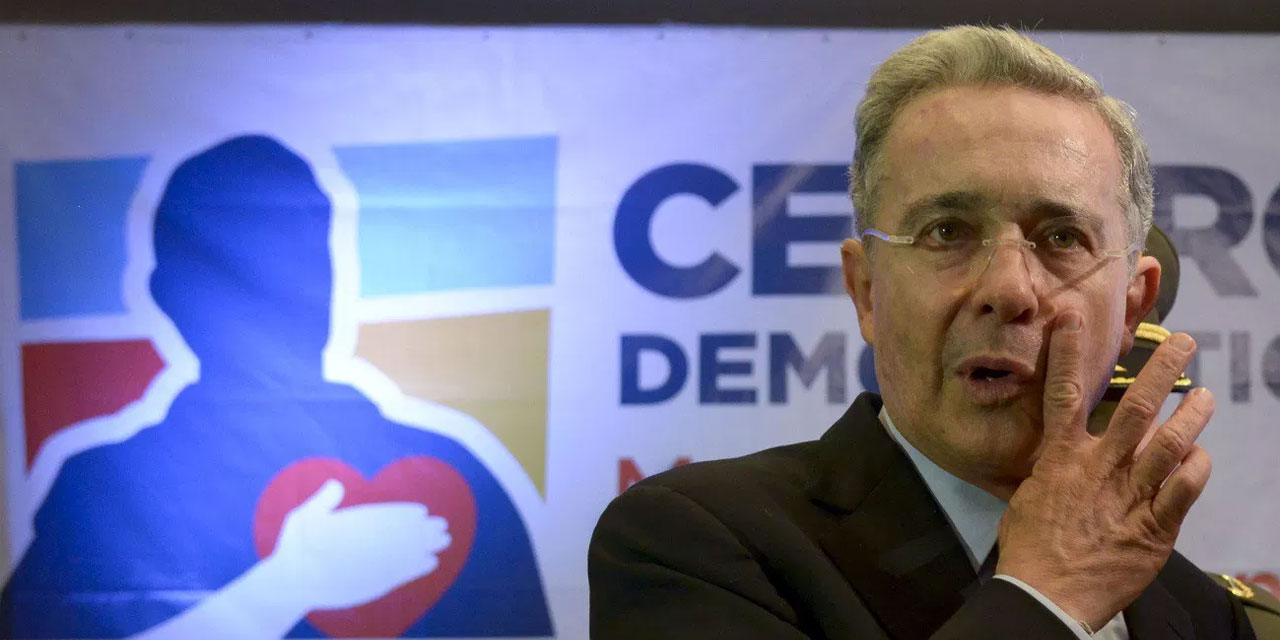These are the war crimes that implicate Colombia’s former President Alvaro Uribe to the extent they could land him in prison for life.
While Uribe enjoys presidential immunity for alleged war crimes committed between 2002 and 2010, the president is also embroiled in investigations of war crimes for which he would enjoy no immunity.
While the Colombian state has already been convicted in each of these cases, the former president continues to enjoy full impunity over his alleged responsibility.
Mass execution of civilians (Victims: >4000)
The mass execution of victims that took place is one of the most horrendous war crimes committed during the entire conflict.
For years, Colombia’s military lured civilians across the country away from populated areas, executed them and dressed them up as guerrillas in an elaborate scheme called “false positives.”
While reports of soldiers passing off killed civilians as guerrillas have been registered since the 1990s, the practice did not become as systematic and widespread until Uribe become commander in chief.
While Colombia’s Prosecutor General’s Office in 2001 did not count more than 31 such killings, by 2007 this had exploded to 1,119. That year, approximately 40% of all the combat kills reported by the Uribe administration later proved to be executed civilians.
Fortunately for Uribe, he enjoys presidential immunity for these crimes. However, the International Criminal Court (ICC) has demanded those “ultimately responsible” be adequately prosecuted, making even a prison in The Hague a possibility.
(Para)military attacks on Medellin (Victims: >77)
Around the time Uribe became president in August 2007, both the Colombian military and paramilitary group AUC were carrying out a series of offensives in Medellin to rid the city’s of leftist militias.
During the most famous of these attacks, “Operation Orion,” the National Army, the Medellin Police Department and paramilitary group BCB of legendary crime lord “Don Berna” all worked together to rid the east of the city of the last remaining communist militias.
During this operation, the military opened fire from helicopters on the western Comuna 13, one of the most densely populated areas in the city. At the same time, paramilitary and security forces entered the area.
A few days later, the communist militias had been expelled and the AUC had consolidated its control over the city under the leadership of Don Berna and the commander of the Bloque Metro, “Doble Cero.”
The Colombian state has already been convicted for the war crimes committed during this operation by the Inter-American Court for Human Rights, but Uribe, who had ordered the operation, has yet to be indicted by Colombian justice.
Nevertheless, also in this case the ICC has the mandate to interfere and demand Uribe be brought before justice in The Hague if Colombia’s transitional justice system fails to do so adequately.
Victims of the operation have demanded a formal apology from Uribe, but have so far been ignored by the former president.
Operation Genesis (Victims: >3500)
Before Uribe became president, between 1995 and 1998, he was governor of his native Antioquia, the birthplace of some of Colombia’s blood-thirstiest paramilitary groups.
As governor, Uribe was one of the main promoters of the creation of armed civilian militias meant to defend private interests. Then-president Cesar Gaviria legalized the formation of such groups in 1994, but this decision was reversed in 1997 after the paramilitary groups began killing civilians on a massive scale.
However, by then, the military and the paramilitaries by then had grown such intimate ties that they jointly carried out anti-guerrilla and even anti-communist operations in spite of this being against the law.
One of these operations was the so-called “Pacification of Uraba” in the northwest of Colombia.
During “Operation Genesis,” paramilitary forces of the Elmer Cardenas Bloc of “El Aleman” entered the FARC-controlled region in collusion with Uribe’s governor’s office and in coordination with the National Army’s 17th Brigade.
While successfully removing the FARC from the economically important region, the operation displaced 3,500 locals and the led to the execution of at least one.
The operation has already led to the incarceration of General Rito Alejo del Rio and another conviction of the Colombian State by the Inter-American Court for Human Rights.
Uribe, however, has so far rejected responsibility.
El Aro massacre (Victims: >14)
The fourth war crime in which Uribe is explicitly named is the 1997 massacre in the hamlet of El Aro, Antioquia where paramilitaries terrorized the locals for days, randomly killing at least 14 of them.
Medellin prosecutors have been investigating Uribe since 2005 and the Medellin Superior Tribunal ordered the criminal investigation of the former president in 2015, but so far without consequences.
The massacre itself took place in October 1997 when more than a 100 paramilitaries took over El Aro, allegedly to look for FARC hostages.
During the three-day occupation of the town, the paramilitaries brutally executed 14 locals after which almost all cattle was stolen, the town set on fire and the local population displaced.
Also in this case, the Colombian state has already been convicted for complicity in the massacre because, while the paramilitaries were killing the locals, a governor’s office helicopter was present at the site, while the military allegedly looked the other way while the paramilitaries removed the cattle.
To prevent further investigations, numerous witnesses were assassinated. However, according to the court, the testimonies they left behind are enough to investigate Uribe’s alleged complicity.


